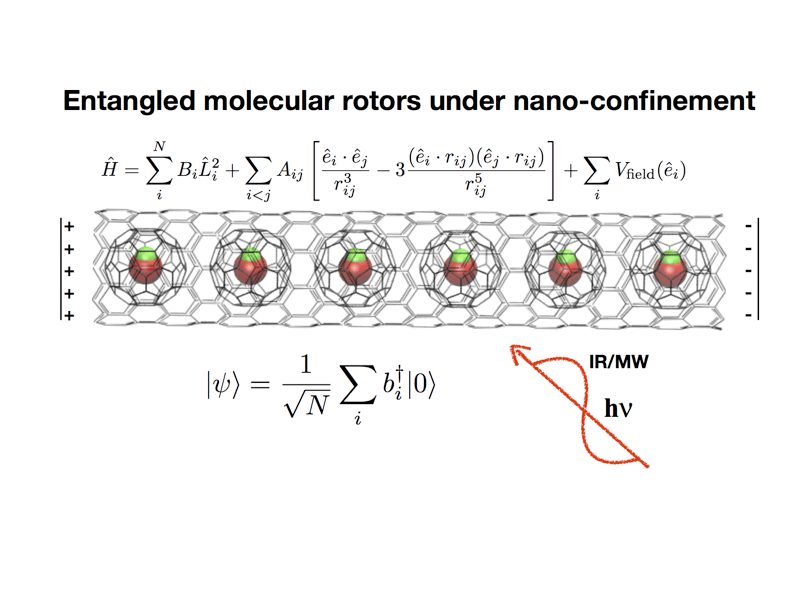Summary
The aim of the work is to develop theoretical tools to simulate and predict the behaviour of a one-dimensional chain of trapped dipolar molecules and to study the nature of entanglement as a design resource. In this device, individual water molecules are trapped inside C60 fullerene cages (also known as buckyballs), which in turn are inserted into a carbon nanotube. Such a peapod-like structure can be created using recent advances in organic synthesis. Remarkably, the quantum level structure of the guest molecule in the carbon nanotube peapod remains nearly identical to a free molecule, which makes this system a promising platform for implementing quantum information protocols, comparable to those explored with atoms and molecules trapped in optical lattices. Along the way, we are working to understand the response of the device to external electromagnetic fields, which could open the door to its use for precision electric field sensing with potential capabilities to detect fields from a single molecule.

Related Content

Quantum Material Multilayer Photonic Devices and Network
Summary Realizing highly integrated quantum photonic devices on a chip can enable new opportunities for photonic quantum computation. In this project, we explore heterostructures of stacked two-dimensional (2D) materials, such transition metal dichalcogenides (TMDC) or graphene, combined with optical microcavities as a platform for such devices. 2D materials are extremely thin and flexible, and have […]
December 12, 2019
Novel High-Speed Receiver for Quantum Communication and Sensing
Summary An essential aspect of a quantum channel is the detection and analysis of quantum signals in the form of photons. For most free-space applications, the photons are polarization encoded, e.g. by assigning the ‘0’ to horizontally polarized photons and ‘1’ to vertically polarized photons. However, where the geometric reference is not constant at all […]
January 1, 2019

Quantum Simulations of Fundamental Interactions
Summary To address questions in modern physics such as “what is the structure of matter inside neutron stars?” we need better computational methods to evaluate the interplay of fundamental forces between elementary particles. To-date the response to such questions rests on numerical computer simulations that are inherently limited. In this project, we develop new theoretical […]
April 18, 2019

Repurposing potential drug candidates for the treatment of COVID-19
Summary The main protease (Mpro) in severe acute respiratory syndrome coronavirus 2 (SARS-CoV-2), the virus responsible for the coronavirus disease (COVID-19), has emerged as a promising drug target. The scientific community has produced a large number of crystallographic structures of the protease, which mediates viral replication and transcription. These structures report several fragments with varied chemotypes […]
May 6, 2020

